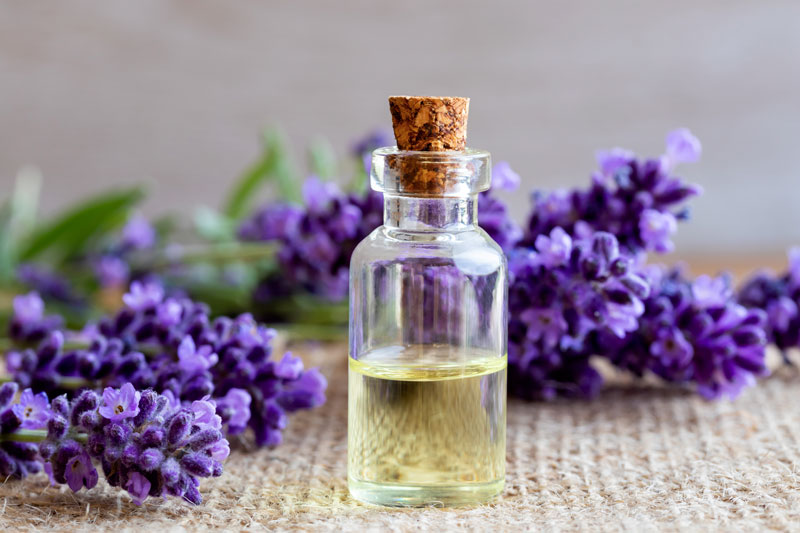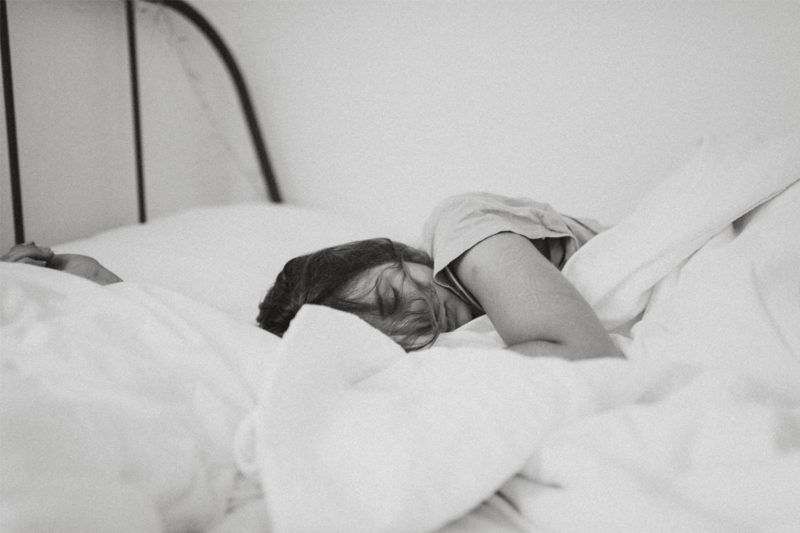A better night’s sleep? It’s nothing but a sweet dream for the 90% of people, here in France at least, who admit that they sometimes sleep badly, and especially for the 33% who have difficulty getting to sleep, are wakeful and light sleepers. But before you reach for medication to sleep like a baby again in no time, try essential oils, whose effectiveness is amply proven.
The 23,000 reputable studies (of which 2,072 last year) published on the international clinical study recognition site PUBMED are proof of the growing interest in essential oils for therapeutic use, both in hospitals and doctors’ offices. And particularly to address sleep disorders.
A study carried out by researchers at the University of Kagoshima (Japan) published in the journal Frontiers in Behavioral Neuroscience, shows that lavender has as much of a calming effect as Valium®, an anxiolytic drug prescribed for severe anxiety attacks.
In addition, if mice are made to sniff linalool (a lavender scent molecule), it has the same effects on their brains as Valium®, without the side effects. When inhaled, this precious substance is thought to work directly on the brain to relieve anxiety without going through the bloodstream.
“The natural molecules in essential oils are active, because they work directly on the central nervous system. Comprised of the brain and spinal cord, this system organises, controls and regulates the body’s essential functions, including emotions, which very often disturb sleep. This close connection accounts for its effective and fast-acting nature”, explains Christophe Pigney, a pharmacist specialising in aromatherapy and phytotherapy, who’s in charge of the SOS AROMA line.
Lavender, essential to fall asleep quickly

Lavender, a Mediterranean plant whose name comes from the Latin word “lavare” (to purify), stands out due to its strong scent. Known for its antiseptic and anti-inflammatory properties, it’s most often recommended due to its calming virtues. Lavender essential oil (lavandula officinalis) has sedative properties used to remedy insomnia that’s related to stress and anxiety. Its main plus point: it promotes falling asleep fast by acting like a mild anxiolytic or sleeping pill, from the very first use onwards.
Directions for use
The other plus point of this essential oil (EO) is that it can be used in a variety of ways:
- As a massage oil: 3 to 4 drops mixed with a little plant-based oil (like sweet almond or macadamia). Apply 3 to 4 drops to the pulse points of the wrists, the temples or the solar plexus, 20 minutes before going to bed
- For ingestion: 3 to 4 drops in a spoonful of honey or on a sugar cube, after dinner and before going to bed
- For inhalation: 2 drops on your pillow, 15 minutes before going to bed, preferably on the side facing the mattress (as it’s further away from your face and eyes), to minimise the chances of your skin reacting to it.
- For diffusion: put 2 or 3 drops of EO into a diffuser and breathe in the vapours half an hour before bedtime.
- In the bath: in a glass, mix 10 to 12 drops of lavender essential oil with a neutral bath oil base or with Epsom salts. Then just before getting in, add the mixture to the bathwater. Have a 15-minute soak, and go to bed straight afterwards.
The best synergy for quality sleep
A great many combinations of EO are prescribed for restoring deep, reparative sleep. One to remember is the synergy of EO of lavender, ylang ylang and sweet orange. This member of the citrus family has a spasmolytic and anxiolytic effect, and also stimulates digestion, thanks to the limonene contained in it. Christophe Pigney says that mixing several EO together like this is an option “on condition that there are not too many different ones, to avoid setting off multiple interactions between molecules”.
Ylang ylang (Cananga odorata)

Nicknamed Asian honeysuckle, the essential oil of which is extracted by distillation, is particularly well-known as a perfume ingredient. Funnily enough, in aromatherapy, it has two completely opposing powers: either invigorating or relaxing. It’s all a question of preparation during distillation. First-press EO has a stimulant effect. The fourth-press variety is calming and used as a tranquilliser. It promotes sleep and counters stress, low mood and anguish. It also regulates blood pressure and combats depression by regulating the central nervous system thanks to a precious substance, linalyl acetate.
Directions for use:
- Mix together 3 drops of ylang ylang and 3 drops of sweet orange EO, and use in the same way as is recommended for lavender
Handy: ready-to-use essential oils
To make EO easier to use as a sleep aid, some laboratories offer it in ready-to-use formats:
- Room spray: Spray Relaxant Sommeil from SOS Aroma, combining 100% natural lavender, sweet orange and ylang-ylang EO; spray sleep from Puressentiel; spray sleep from Pranarôm Aromanoctis; organic Sommeil paisible spray from Ladrôme.
- Massage roll-on: Roll’on relaxation from SOS Aroma; Sommeil Sleep from Elixirs & Co.
Recommendations concerning EO use
Caution should be exercised when using EO, says the pharmacist specialising in aromatherapy, “as they really are effective. If you’re unsure, seek advice from an aromatherapist or pharmacist.”
Contraindications apply:
- To those allergic to EO, regardless of administration method
- To pregnant or breastfeeding women, to those with a history of convulsions or epilepsy and to children under 7 years old.
They call for the following precautions:
- Always wash your hands with soap and water after use
- In case of accidental contact with the eyes, flush thoroughly with water, then cleanse the eye area with a cotton-wool pad soaked in plant-based oil.
- Avoid the sun if you don’t want to develop blotches. Because some essential oils promote photosensitivity or irritate the skin.
“Interest in EO has really spiked over the past 10 years, particularly as a sleep aid. This is because they are absolutely rooted in the underlying trend towards all things natural, with the easy routines that are inhaling, applying and ingesting. They form part of the overall treatment of the individual, and can therefore be used to prevent or remedy all everyday ailments” concludes Christophe Pigney.







